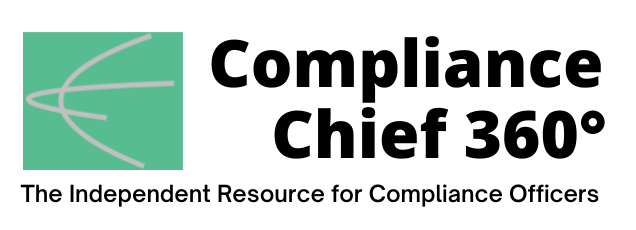
This CEO—we’ll call him Jack—was a complete jerk. He told crass jokes around the office. He bragged about his old college sexual conquests. And he bullied people by swearing at them and demeaning them. Jack fostered a corporate culture bulging with masculine bravado and a dog-eat-dog mentality. He was in charge and he wanted everyone to know it, even if no one really respected him.
Things got so bad that all the women in the small office eventually quit their jobs. They were tired of the snide comments, the sexual innuendos, and the angry demands. Lets just say it’s likely that Jack was responsible for more than his share of “me too” moments. At the company Christmas dinner, he joked about the all-male staff: “People might look at us and say we are sexist, but it’s not true. Hey, we tried a few broads… they just didn’t work out!”
His abrasion wasn’t reserved just for women, though. One sales manager was so terrified that one day he simply stopped coming into the office. No two-weeks notice, no letter of resignation, not even a phone call. After wondering where he was after a few days, we found a note on his desk that had been buried by incoming mail. It simply read, “I quit.” This manager hadn’t had the stomach to tell Jack face to face that he couldn’t stand working in the environment the boss had created and that he was leaving.
Jack’s poor behavior was contagious. There were heated arguments in the office all the time. People swore at each other. Opposing fractions developed. We had two fistfights in the office. Yes, that’s right, physical fistfights. There is nothing more unsettling then watching two guys bloodying each other’s noses in double-breasted blazers and Brooks Brother’s ties.
Sour Notes
The term wasn’t popular then, but this was tone at the top and what a horrible tone it was. More than a sour note, it was a cacophony of irresponsibility and downright meanness. And here’s the thing: It was completely intentional. Jack was creating exactly the type of culture that he wanted. He believed that command-and-control leadership, Darwinian battles of the fittest, brawn, and heated competition, were the ingredients to a winning company—one that leaves competitors in the dusk, saves money by screwing over suppliers, squeezes staffers into pulp, and takes no prisoners.
He was wrong. The hard-charging sales guys drove potential customers away. The scorned suppliers stopped supplying. The friction in the office grew dysfunctional and important worked suffered. Eventually, the company collapsed in on itself. I’ll never forget the day the entire staff was summoned to the conference room to be told that despite it being payday, no paychecks would be issued.
It’s an extreme example of course—and hopefully we have all learned a great deal about the dangers of command-and-control management—but it’s a reminder that culture matters. Hell, kindness matters! And most of us now know that companies run on testosterone don’t usually perform very well.
Setting the Tone
I think we can all agree that “tone at the top” is a terrible phrase for an important idea—that the actions and behavior of the CEO, the board, and other corporate leaders have the most influence on shaping the ethos of any organization.
We could call it “lead by example,” “behavior at the top,” or “don’t act like jerks in the corner office,” but those just don’t have that poetic alliteration of tone at the top. And while the pithy phrase has wormed its way into how we talk about corporate culture, organizational ethics, and even risk management, it’s easy to toss it about without really thinking about or understanding exactly what it means. It’s easy to forget that tone at the top is about people.
It’s true too, though, that tone at the top is a tricky thing. These days, many organizational leaders talk about it, but they don’t spend time reflecting on what it really means. Tone at the top is way more than monkey see, monkey do. Tone at the top is about humanity and not about words like compliance and regulation. It is about doing the right thing and we all know what that is in our hearts. It is about treating people with dignity and respect.
Tone at the top is about creating an environment—from the boardroom to the mailroom—where people thrive. It’s about creating a place where they feel respected, where they are empowered, where they are reminded of their higher purpose, and where people flourish and do their best work. Those are companies that leave competitors in the dust.
Setting a tone, considered literally, can mean playing a note others can harmonize to or use to tune their own voices or instruments. As humans we tend to want to join the community and follow the actions of others, particularly those in leadership roles. It’s human nature to allow the actions of others to influence our own behavior, both for good and—as Jack reminds us—for bad.
Even small violations can have big consequences. It’s been long observed now that organizations where the leaders cut corners, take small liberties, hold themselves above following policies, and engage in many other minor transgressions, have more problems with employees who also break the rules and that wrongdoing can run the gamut from breaking policies, inflating expense reports, to outright fraud.
Internal Audit’s Tough Task
Internal auditors, familiar with the powerful connection between tone at the top and culture, must assess the tone as part of the increasingly common culture audit. But this is a difficult task. Assessing the behavior, actions, and words of those who sign your paychecks and decide your raises and promotions is tough work. How do you ask your boss, or maybe your bosses’ boss, if he or she handles conflicts in a proper way? What happens when you find that people who raise concerns inside the company get demoted or pushed out of the company? Internal auditors point out the behavioral failings of corporate leaders at their own peril, but it must be done. Internal auditors are the protectors of integrity in the organization.
As a young, inexperienced rookie in the workforce for the first time, I never confronted Jack. And to be honest, I never even considered it. At companies where internal auditors and risk managers share some responsibility for the ethical climate of the organization, they can’t afford not to confront the Jack’s of their worlds.
Joseph McCafferty is editor & publisher of Compliance Chief 360°


I’ve written a lot about this, but I appreciate your bad (in the extreme) example. You’re right that the phrase tone from the top is helpful- so many leaders and Boards don’t understand it’s behavior and actions that make the difference, not just a speech, video or memo from HQ. compliancestrategists.com/csblog/2013/07/08/tone-top-just-enough/. I’ll match your bad case study with my favorite good role model one. Pope Francis.compliancestrategists.com/…/5-Ethical-Culture-Lessons-for-CEOs-from-Pope-Francis. . Leaders aren’t graduated understanding ethical leadership. The must be coached and incentivized (Novartis). Now that gatekeepers are recognizing the CCO as a new independent SME in the CSuite, I believe it’s the important management tool/SME to coach and build ethical leadership in the management ranks. In one of my early CCO roles, I created a model that tied 30{6403a9fab1fa50468a160de584123d47f2dbf64537a48b66fbcabd36d534d399} of senior exec bonus into 5 ethical Leaderhip behaviors as rated in the annual 360 degree performance protocol by supervisors, peers and direct reports (because leaders need to be told what makes for ethical leadership, with examples). I have anecdotal stories that underscore that this works. This is the only way to build better role models and ethical leadership behavior. Now Novartis has announced its linkage of bonus to behavior. The devil’s in the details for these things and I hope they are implementing their program effectively. I plan to write a column on this topic ( a how-to)this year- because more companies need this feature to complete their compliance/culture programs..
Donna, Thanks for your excellent comment. i will look at those cases. And now I know whom to call on when I’m reporting on this topic. Ha.